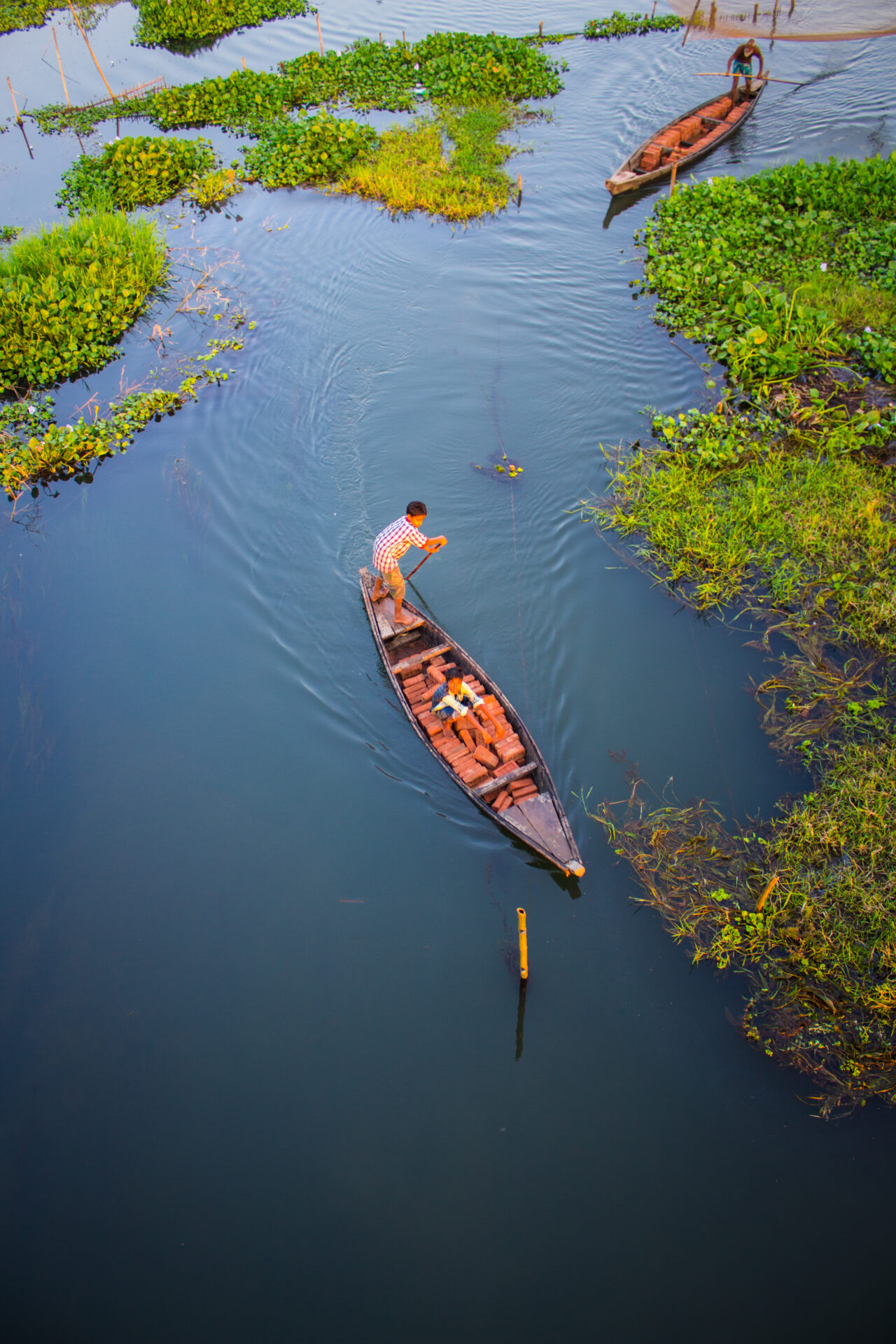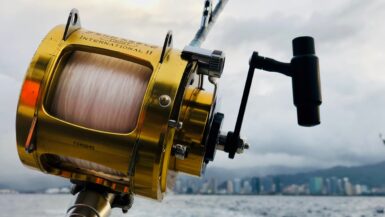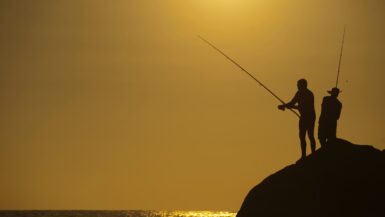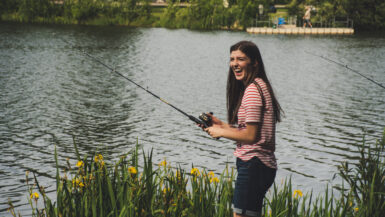Fishing for carp in rivers is an exciting and rewarding experience. Carp are a popular game fish that can be found in many rivers throughout the world. They provide a challenge for both beginner and experienced anglers alike, and can provide an abundance of fresh fish to be brought home at the end of the day. But, like any activity involving nature, it requires some understanding of the best techniques for catching carp in rivers. In this article, we will discuss the best techniques for fishing for carp in rivers, from the equipment you need to strategies for successfully luring the fish into biting.
Essential Gear and Tackle
River fishing for carp requires some specific gear and tackle, to ensure a successful, safe and enjoyable experience. When it comes to fishing for carp in rivers, there are a few essential pieces of equipment you need to have with you.
Carp Fishing Rod
Invest in a strong, durable rod able to handle the weights of the carp and the sometimes unpredictable nature of the river. For carp in rivers, a 2.75 lb (1.25 kg) test curve rod is ideal, along with a reliable and responsive reel.
Carp Fishing Hooks
Choose a size 4 or 6 carp hook, depending on the size of the bait you are using. A shorter, lighter hook is the best option for fishing for carp in rivers, as it will cut through the current more easily and increase your chances of landing a carp.
Other Fishing Tackle
Other essential pieces of tackle for river fishing for carp include a strong line, such as a 15 lb (6.8 kg) breaking strain, and extra hooks, swivels and leads. You’ll also need a bait box to store your bait, along with weights, floats and a landing net.
Safety Items
When fishing for carp in rivers, it is essential to take safety precautions. Wear a life jacket when fishing from a boat or near deep water, and pack a first aid kit in case of an unexpected accident. Keep a cell phone in a waterproof container in case of emergency.
Finally, include a cooler to keep your catch fresh, as well as a plentiful supply of snacks and drinks. With the right gear and tackle, you’re sure to have a successful and enjoyable river fishing experience for carp.
Locating Carp
Carp are an abundant species of fish that can be found in rivers, ponds, and lakes throughout the world. Knowing how to identify carp in rivers is an important skill for anyone interested in fishing for carp. Carp can be identified by their characteristic large scales, large head, and large, sucker-like mouth. They are typically grayish-brown or yellowish-brown in color, and they have a long, slender body shape. The average carp size ranges from 8 to 24 pounds.
Locating Carp in Rivers
When fishing for carp in rivers, the first step is locating their presence in the water. Carp prefer to stay in areas with slow-moving water and abundant vegetation like weeds and lily pads because these areas provide them with the food, shelter, and protection they need. Look for areas with lots of vegetation and slow water, as these are the ideal places for carp to congregate. Carp also like to stay near rocks and logs, as these provide them with places to hide from predators.
A great way to tell if there are carp in the water is by looking for their food. Carp feed on a wide variety of plants, insects, and small fish, and they tend to congregate in areas where their food sources are abundant. So if you see a lot of small aquatic insects or vegetation, chances are that there are carp in the area.
Best Fishing Techniques for Carp in Rivers
Once you have located carp, the next step is to determine the best fishing techniques for catching them in rivers. Carp are a bottom-feeding fish, so the most effective fishing techniques involve presenting bait on the bottom or near the bottom of the river. Popular carp bait includes doughballs, worms, and corn. It’s important to keep the bait on the bottom or near the bottom of the river to ensure that the carp are able to detect the bait.
When presenting the bait, use a heavy weight so that it can sink to the bottom quickly. This will give the carp more time to feed, which increases your chances of catching one. It’s also important to remember that carp can be very finicky eaters, so it’s important to present the bait in multiple spots and move it around to provoke a reaction from the carp.
Setting the Hook and Reeling in Carp
Once a carp takes the bait and bites, it’s important to set the hook and start reeling quickly. Carp have strong jaws and a hard mouth, so it’s important to set the hook firmly to avoid having the carp spit out the bait. When reeling in a carp, it’s important to keep the line tight at all times to prevent the carp from throwing the hook.
Carp are hard-fighting fish, and they often make several runs in an attempt to free themselves. In order to avoid losing the carp, it’s important to keep the line tight and wear gloves when handling the carp. Reeling in a carp can be a long and tiring process, so it’s important to be prepared for a lengthy fight when fishing for carp in rivers.
Preferences in Bait
When it comes to fishing for carp in rivers, the right bait can make a huge difference in your success. Knowing what bait the carp prefer is essential to catching them. Carp are fairly omnivorous fish and they will feed on almost any type of bait that they find in the river. However, some types of bait are more likely to attract carp than others.
Using Live Bait
Live bait is often the best option for catching carp in rivers. Common live baits include maggots, worms, and small fish. Live bait will often be more effective than artificial baits because it smells more natural and is more likely to attract carp. Live bait should be presented in a way that the carp are most likely to take the bait. This could involve using a float to suspend the bait in the water or using a weight to sink the bait down to the bottom.
Using Artificial Baits
Artificial baits are another good option for catching carp in rivers. Boilies are among the most popular artificial baits for carp. Boilies are usually made from a combination of fish meal, semolina, and other ingredients such as cheese and spices. They are usually scented and colored to attract carp and they can be used to catch carp in both shallow and deep water. Other types of artificial baits that can be used to catch carp include pellets, corn, and bread.
Finding the Right Hook Size
When fishing for carp in rivers, it is important to use the right size of hook. A size 10 to 12 hook is usually a good size for carp. The size of the hook should be big enough to hold the bait, but small enough to not be too visible and scare away the carp. It is important to match the size of the bait to the size of the hook.
Using Multiple Hooks
Using multiple hooks is also a good technique for catching carp in rivers. This will increase the chances of catching carp as they often swim in small groups. Multiple hooks can be presented in a variety of ways, such as using a single line with multiple hooks or using multiple lines with multiple hooks. When using multiple hooks, it is important to make sure the baits are evenly spaced so the carp can find the bait.
Using a Variety of Baits
Using a variety of baits is another effective technique for catching carp in rivers. Different carp will prefer different baits, so it is important to use a variety of baits to increase your chances of success. Common baits for carp include maggots, worms, boilies, pellets, corn, and bread. Experimenting with different baits can help you find out which ones the carp in your area are most likely to take.
Using Groundbait
Groundbait is another effective technique for catching carp in rivers. Groundbait is usually made from a mixture of different baits, seeds, and grains. It is used to attract carp to the area and to make them stay in the area longer. Groundbait can be used to catch carp in both shallow and deep water.
How to Cast
Carp fishing in rivers can be a great pastime for anglers of all levels of experience. To be successful, it is important to have the right fishing gear. The basics include a good rod and reel, plus plenty of appropriate bait for carp. Additionally, tackle such as floats, weights, and rigs can help ensure that carp can be caught without any trouble. Selecting the right gear can ensure a successful day of fishing.
Choosing the Best Fishing Spots
Finding the right fishing spot is key to carp fishing success. Carp can often be found swimming in slow-moving waters, so it can be helpful to look at rivers that don’t have a strong current. Additionally, carp like to gather in areas with thick vegetation, so look for spots where there is plenty of tall grass and vegetation. In many cases, carp can be found in shallow waters, so look for spots that are not too deep.
Preparing the Bait
Once an appropriate fishing spot is chosen, it is time to prepare the bait. Carp are often attracted to sweet or savory flavors, so it is important to select bait that will be attractive to them. Artificial bait can also be used, but live bait can be more effective when it comes to carp fishing in rivers. Common baits include sweetcorn, bread, and worms, but other options might work just as well.
Casting the Line
Once the fishing spot and bait are chosen, it is time to start casting. When casting, it is important to choose the right spot. Try to cast the line in areas where there is likely to be carp. Additionally, it is important to get the depth of the line correct. If the line is too deep, it may not be attractive to carp. Try to cast the line in areas where it will be close enough to carp for them to notice the bait.
Using the Right Technique
When fishing for carp in rivers, it is important to use the right technique. Try to keep the line as still as possible and use slow and steady movements. Avoid using too much force, as this can alarm carp and cause them to avoid the bait. Additionally, it can be helpful to use short, sharp movements when bringing the line to the surface. If a carp is hooked, use smooth, consistent movements to bring it to shore. With the right technique, anglers can have a successful day of fishing.
Best Times to Fish for Carp
Fishing for carp in rivers can be a rewarding experience for anglers of all levels. Carp are found in rivers all over the world, and it’s important to understand the ideal conditions for a successful fishing trip. One of the key factors to consider when fishing for carp in rivers is the time of day or year, as certain times are best for carp fishing.
Influencing Factors for Best Times to Fish for Carp
When deciding what time of day or year is best for carp fishing, there are several influencing factors to consider. The season, weather, water temperature, water clarity, and the carp’s daily and seasonal feeding habits, among other things, can all affect the best times to fish for carp in rivers. Here, we’ll discuss what these factors are and how they can help you decide when to cast your line for carp.
Seasonal Changes in Carp Behavior
Seasonal changes can have a profound effect on carp behavior. Carp are cold-blooded creatures, so water temperature can affect their activity levels and where they may be found in a river. During the spring, carp are more likely to be found in shallow, warmer water, while in the winter they will seek deeper areas that are a bit colder. Furthermore, the carp’s reproductive cycle can also affect their behavior in rivers. During the spawning season, adult carp will move to areas with gravel or sand bottoms to lay their eggs.
Weather Conditions
The weather is another important factor to consider when fishing for carp in rivers. Carp tend to be less active when the weather is cold, wet or windy, so cloudy and overcast days are often the best times to go carp fishing. These conditions can help mask the presence of an angler, thus making it easier to lure carp to your bait.
Water Clarity and the Carp’s Feeding Habits
Water clarity is important when fishing for carp in rivers. If the water is murky, carp may be more likely to feed near the bottom of the river, as they won’t be able to see any potential predators. If the water is clear, carp are more likely to be found in the shallower parts of the river, feeding off the surface. It’s also important to note that carp typically feed more heavily in the early morning or evening, so those are the best times to fish for carp in rivers.
Key Takeaways
In order to have a successful carp fishing trip, it’s important to understand the ideal conditions. Seasonal changes, weather conditions, and water clarity can all affect when it’s best to go carp fishing. Additionally, carp typically feed more heavily during the early morning and evening, so those are the best times for anglers to cast their line for carp in rivers. With this knowledge in hand, you can plan your carp fishing trips for the best possible success.
Conclusion: The Benefits of Fishing for Carp in Rivers
Fishing for carp in rivers can be a rewarding and enjoyable experience. With the right techniques, anglers can take advantage of the unique qualities of the environment and catch carp with greater success. Fishing for carp in rivers offers a unique challenge and the opportunity to engage with the environment in a meaningful way. With the right knowledge and preparation, anglers can enjoy the benefits of a successful fishing trip.





Leave a reply